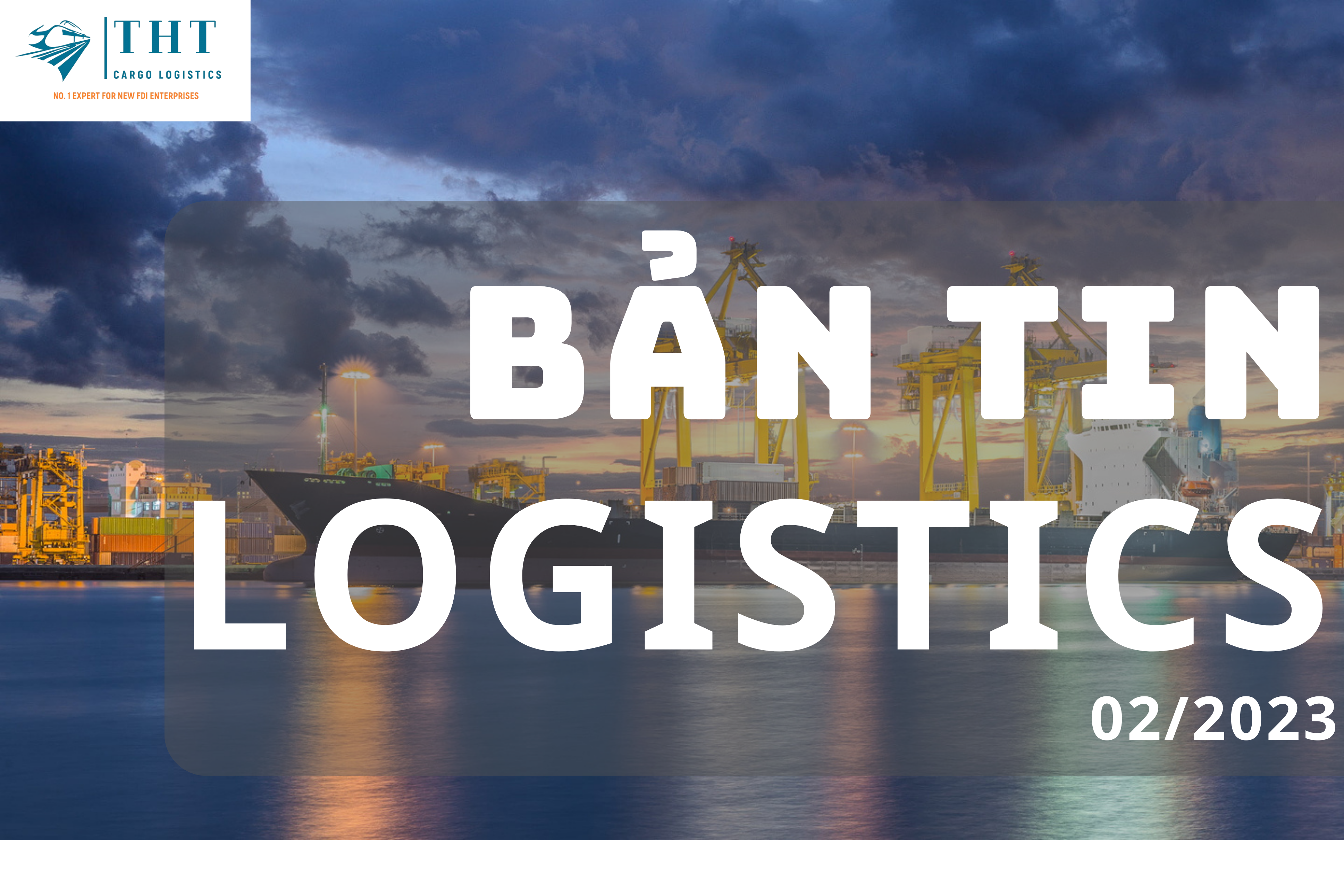- Vietnam sees surge in deep-sea vessel capacity amid trade sourcing shift
- Boxport congestion back to pre-covid levels
- Record-breaking Fall In Long-Term Rates For Ocean Freight As Carriers Brace For Stormy 2023
- Seasonality is a thing of the past, port executive says
- Thousands of ships set to be hit by India’s age restrictions

Vietnam sees surge in deep-sea vessel capacity amid trade sourcing shift
Soaring trade volumes in Vietnam, partly due to manufacturers shifting from China due to Beijing’s tough COVID-19 lockdowns and quarantine restrictions last year, have led to a surge in mainline vessel capacity calling at Vietnam ports.
Figures specially compiled by British logistics consultant MDS Transmodal for the Journal of Commerce show deep-sea vessel capacity accounted for the majority of ship calls at Vietnam ports for the first time ever last year, overtaking feeder and regional vessel capacity.
The figures also show Vietnamese ports are seeing faster year-on-year growth in deep-sea capacity than ports in China as carriers add long-haul services as they respond to shipper demand amid a surge in exports from Vietnam.
About 3.4 million TEU of deep-sea capacity called at Vietnamese ports in the fourth quarter of last year, a 21 percent increase from Q4 2021, according to figures from the MDS Transmodal Containership Databank.
By comparison, short-sea deployed capacity was 3.2 million TEU in the fourth quarter compared with 2.9 million TEU a year earlier.
Antonella Teodoro, MDS Transmodal senior consultant, said the deep-sea to short-sea capacity ratio was 51 percent last year, the first time deep-sea deployed capacity had overtaken short-sea traffic.
She pointed out that 2M alliance carriers Mediterranean Shipping Co. and Maersk have the largest share of deployed capacity calling at Vietnam ports, with each having about 16 percent of the market. But the fastest-growing are non-alliance carriers Zim Integrated Shipping Services and Wan Hai Lines, which increased capacity calling in Vietnam by 32 and 40 percent, respectively, in the fourth quarter compared with a year earlier.
Teodoro expected that capacity on deep-sea routes would grow further as more goods are made and traded from Vietnam.
Boxport congestion back to pre-covid levels
Boxport congestion is now back to pre-covid levels according to one UK index. A key lever in the last couple of years of record earnings for liner shipping has disappeared, according to the latest data from Clarksons Research.
Clarksons containership port congestion index closed on Friday at 31.5%, a similar number to the pre-covid (2016 – 2019) average of 31.6%. Friday’s figures represented the lowest daily average since October 2019.
E2open, a supply chain SaaS platform, has recently published its Q4 2022 report, contained in which is data showing that as of January 1 this year, it takes a company an average of 63 days to deliver goods to truck or rail carriers after booking with an ocean carrier and completing the cross-ocean journey. This is an eight-day global average decline from the same quarter last year.
“The major drop in demand for goods shipping out of Asia has continued to reduce port congestion and resulted in shorter actual transit times,” the E2open report noted.
“Unless we get a strike on the US West Coast, we remain on track to revert to full normalisation by the end of 2023-Q1,” analysts at consultancy Sea-Intelligence predicted in a recent weekly report. “This means that we see sharply dropping demand combined with a significant injection of capacity due to reduced bottlenecks.”
Peter Sand, chief analyst at freight rate platform Xeneta, questioned the Clarksons data, agreeing with Sea-Intelligence that port congestion ought to be consigned to the “history books” by the end of the first quarter.
Sand noted that the congestion picture had been heavily obscured by covid in recent weeks, with China, where the disease has spread rapidly over the past month, experiencing congestion at its ports hitting highs not seen for two and a half years, while the US east coast is at one-year lows, and across Europe congestion is down to two-year lows.
“For the carriers, the declining congestion levels put added pressure on the freight market and the upper hand position that they have had during the covid years,” Sand told Splash.
Record-breaking Fall In Long-Term Rates For Ocean Freight As Carriers Brace For Stormy 2023
January proved to be a dramatic month for long-term ocean freight rates, with the latest data from the Xeneta Shipping Index (XSI®) showing the largest ever month-on-month declines. According to the XSI®, which is based on crowd-sourced data from leading shippers worldwide, average long-term contracted rates dropped by 13.3% in January. This is now the fifth month in a row of falling prices on the index, with, Xeneta warns, little sign of change ahead in what looks set to be a challenging year for carriers.
Shippers in the driving seat
January’s decline marks a significant change in tempo from December’s 0.1% dip in prices, but, as Xeneta CEO Patrik Berglund explains, it wasn’t entirely unexpected.
“Global demand has fallen away, congestion has eased, equipment is available, and the macro-economic and geopolitical situations are, to say the least, complex,” he states. “As a result of those market fundamentals, spot prices have collapsed, spiralling downwards since late summer 2022. However, the carriers have managed to protect long-term rates from the worst impacts, until now.”
He continues: “With the dawn of 2023 many of the contracts negotiated last year have expired. Shippers, well aware of market dynamics turning in their favour, have reacted, pushing carriers for major rates reductions. What we’re seeing now is the effect of that, as new contracts enter validity. And, for the carriers, worse is set to come.”
Seasonality is a thing of the past, port executive says
Despite a four-month streak as the nation’s busiest containerport, the Port of New York and New Jersey saw volumes decline YoY in December.
Volatile demand trends over the past few years have made forecasting ocean shipping cargo volumes more difficult, according to the head of the Port Authority of New York and New Jersey.
“There is no longer any seasonality or predictability to the cargo peaks and valleys that our industry had become accustomed to,” port director Beth Rooney said in a State of the Port briefing on Jan. 25.
Cargo volumes, which soared at many ports over the past few years, are now being met with softening demand. The trend comes as retailers pull back orders to clear inventories and the warehouse market shows signs of cooling due to demand slowdown.
The Port of New York and New Jersey celebrated record volumes in 2022 including a four-month streak as the nation’s busiest containerport, President of Global Container Terminals John Atkins said at the event. The streak was broken in December, though, as cargo volumes fell nearly 21% YoY to 613,011 TEUs.
Rooney said the port had noticed a “rather sharp decline in volume and a softening of the market,” since October. The slowdown was due to the extended lunar new year shutdowns, rising COVID-19 cases in China, rising costs, lower consumer spending and high inventory in warehouse and distribution centers, she added.
“We expect that market to remain soft but at more normalized levels through the first half of the year,” she said.
Thousands of ships set to be hit by India’s age restrictions
Greek data firm MarineTraffic has provided some details of the ramifications of the upcoming Indian ban on older ships.
New Delhi is readying age restrictions for ships calling at the world’s second most populous nation.
Under the new rules no bulk carrier, tanker or general cargo ship aged 25 or older will be allowed to call at Indian ports. For gas carriers, offshore vessels and boxships the age limit will be set at 30 years. Locally flagged ships will be deregistered when they hit these new age limits. Furthermore, owners will not be able to locally flag any secondhand acquisitions that are 20 years old or above.
MarineTraffic data shows that 3,802 tankers and bulkers built prior to 1998 arrived in India in 2022.
Regarding the new rule ito ban ships older than 20 years from registering with the Indian flag, MarineTraffic notes there are currently 753 ships built prior to 2003, which are registered under the Indian flag, 133 of which are tankers and 61 bulkers.
According to Xclusiv Shipbrokers, India is responsible for 17% of the world seaborne iron ore trade, 19% of the world’s seaborne coal trade and 2% of the world’s seaborne grain trade. On the wet market, India is responsible for 12% of the world’s seaborne crude oil trade and 7% of the world’s seaborne oil product trade.
“Although operators of older vessels only face losing access to one country, India’s growth is only set to make this restriction more significant as time goes by,” a recent report from Allied Shipbroking suggested.
Visits: 44


